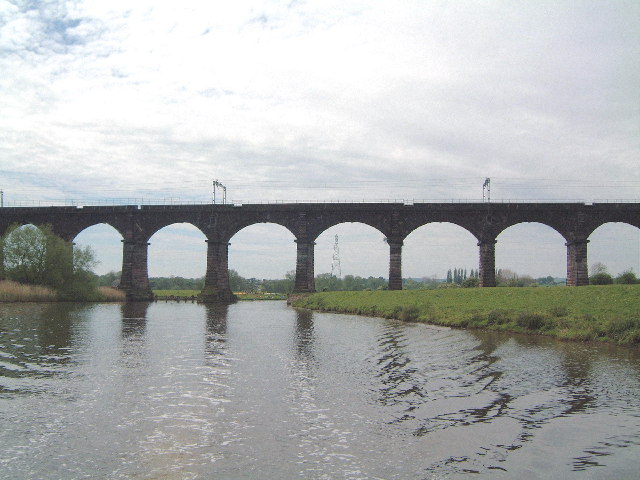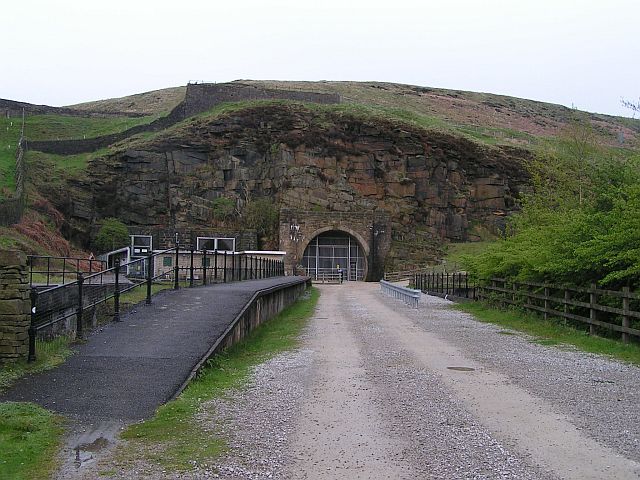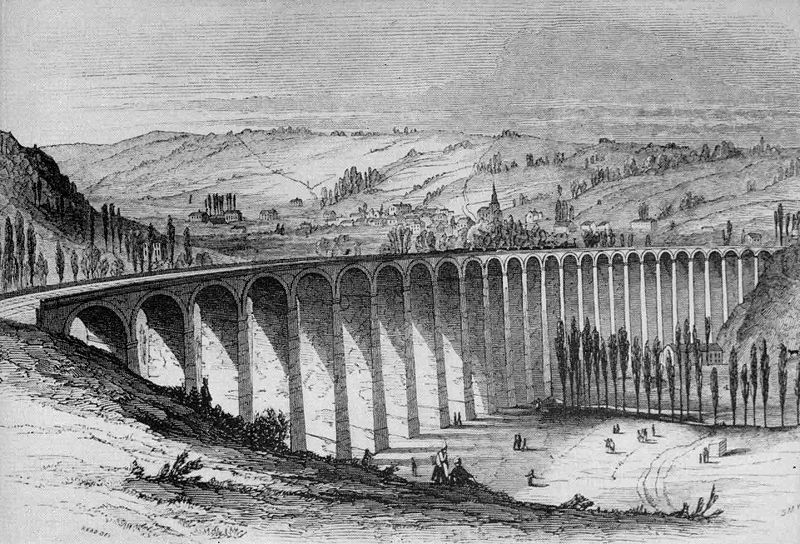<Back to Index>
- Engineer Joseph Locke, 1805
- Architect František Maxmilián Kaňka, 1674
- Lieutenant Colonel of the Texian Army William Barret Travis, 1809
PAGE SPONSOR
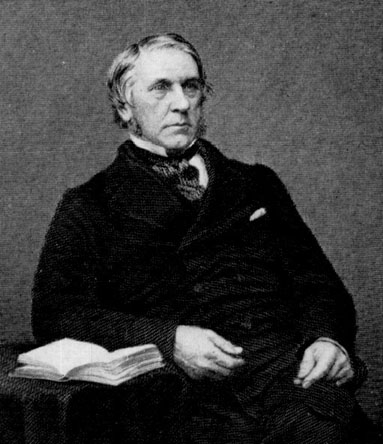
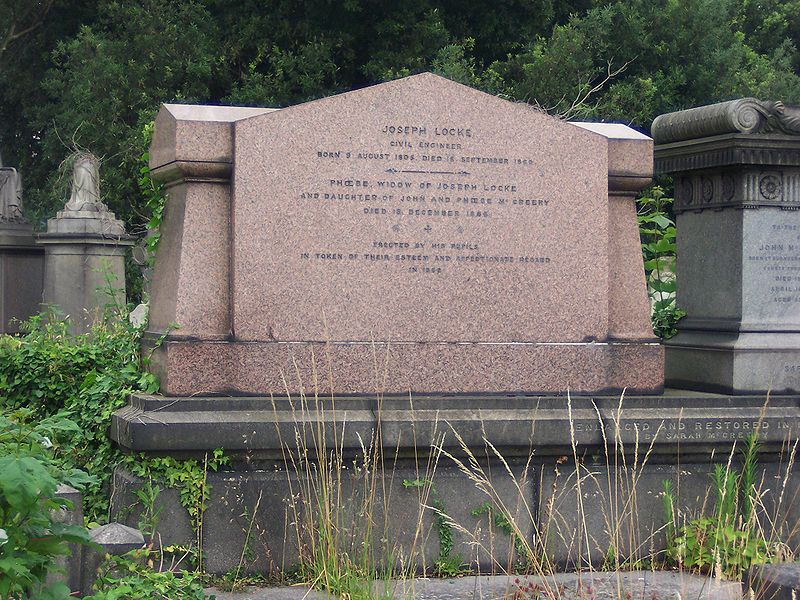
Joseph Locke (9 August 1805 - 18 September 1860) was a notable English civil engineer of the 19th century, particularly associated with railway projects. Locke ranked alongside Robert Stephenson and Isambard Kingdom Brunel as one of the major pioneers of railway development.
Locke was born in Attercliffe, Sheffield in Yorkshire, moving to nearby Barnsley when he was five. By the age of 17, Joseph had already served an apprenticeship under William Stobart at Pelaw, on the south bank of the Tyne, and under his own father, William. He was an experienced mining engineer, able to survey, sink shafts, to construct railways, tunnels and stationary engines. Joseph’s father had been a manager at Wallbottle colliery on Tyneside when George Stephenson was a fireman there. In 1823, when Joseph was 17, Stephenson was involved with planning the Stockton and Darlington Railway. He and his son Robert Stephenson visited William Locke and his son at Barnsley and it was arranged that Joseph would go to work for the Stephensons. The Stephensons established a locomotive works near Forth Street, Newcastle upon Tyne, to manufacture locomotives for the new railway. Joseph Locke, despite his youth, soon established a position of authority. He and Robert Stephenson became close friends, but their friendship was interrupted, in 1824, by Robert leaving to work in Peru for three years.
George Stephenson carried out the original survey of the line of the Liverpool and Manchester Railway, but this was found to be flawed, and the line was re-surveyed by a talented young engineer, Charles Vignoles. Joseph Locke was asked by the directors to carry out another survey of the proposed tunnel works and produce a report. The report was highly critical of the work already done, which reflected badly on Stephenson. Stephenson was furious and henceforth relations between the two men were strained, although Locke continued to be employed by Stephenson, probably because the latter recognised his worth. Despite the many criticisms of Stephenson’s work, when the bill for the new line was finally passed, in 1826, Stephenson was appointed as engineer and he appointed Joseph Locke as his assistant to work alongside Vignoles, who was the other assistant. However, a clash of personalities between Stephenson and Vignoles led to the latter resigning, leaving Locke as the sole assistant engineer. Locke took over responsibility for the western half of the line. One of the major obstacles to be overcome was Chat Moss, a large bog that had to be crossed. Although, Stephenson usually gets the credit for this feat, it is believed that it was Locke who suggested the correct method for crossing the bog.
Whilst the line was being built, the directors were trying to decide whether to use standing engines or locomotives to propel the trains. Robert Stephenson and Joseph Locke were convinced that locomotives were vastly superior, and in March 1829 the two men wrote a report demonstrating the superiority of locomotives when used on a busy railway. The report led to the decision by the directors to hold an open trial to find the best locomotive. This was the Rainhill Trials, which were run in October 1829, and were won by “Rocket”.
When the line was finally opened in 1830, it was planned for a procession of eight trains to travel from Liverpool to Manchester and back. George Stephenson drove the leading train “Northumbrian” and Joseph Locke drove “Rocket”. The day was marred by the death of William Huskisson, the Member of Parliament for Liverpool, who was struck and killed by “Rocket”.
In 1829 Locke was George Stephenson’s assistant, given the job of surveying the route for the Grand Junction Railway. This new railway was to join Newton-le-Willows on the Liverpool and Manchester Railway with Warrington and then on to Birmingham via Crewe, Stafford and Wolverhampton,
a total of 80 miles. During the construction of the Liverpool and
Manchester Railway, Stephenson had shown a lack of ability in
organising major civil engineering projects. On the other hand Locke’s
ability to manage complex projects was well known. The directors of the
new railway decided on a compromise whereby Locke was made responsible
for the northern half of the line and Stephenson was made responsible
for the southern half. However Stephenson’s administrative inefficiency
soon became apparent, whereas Locke estimated the costs for his section
of the line so meticulously and speedily, that he had all of the
contracts signed for his section of the line before a single one had
been signed for Stephenson's section. The railway company lost patience
with Stephenson, but tried to compromise by making both men
joint-engineers. Stephenson's pride would not let him accept this, and
so he resigned from the project. By
autumn of 1835 Locke had become chief engineer for the whole of the
line. This caused a rift between the two men, and strained relations
between Locke and Robert Stephenson. Up to this point, Locke had always
been under George Stephenson’s shadow. From then on, he would be his
own man, and stand or fall by his own achievements. Locke’s route avoided as far as possible major civil engineering works. The main one was the Dutton Viaduct which crosses the River Weaver and the Weaver Navigation between the villages of Dutton and Acton Bridge in Cheshire.
The viaduct consists of 20 arches with spans of 20ft. The line was
opened on 4 July 1837. An important feature of the new railway was the
use of double-headed (dumb-bell) wrought iron rail supported on timber
sleepers at 2 ft 6 in intervals. It was intended that when the rails
became worn they could be turned over to use the other surface, but in
practice it was found that the chairs into which the rails were keyed
caused wear to the bottom surface so that it became uneven. However
this was still an improvement on the fish-bellied, wrought-iron rails
still being used by Robert Stephenson on the London and Birmingham Railway. Proof
of Locke's ability to estimate costs accurately is given by the fact
that the construction of the Grand Junction line cost £18,846 per
mile as against Locke's estimate of £17,000. This is amazingly
accurate compared with the estimated costs for the London and
Birmingham Railway (Robert Stephenson) and the Great Western Railway
(Brunel). A
significant difference between the surveying methods of George
Stephenson and Joseph Locke was that, because Stephenson had started
his career at a time when locomotives had little power to overcome
excessive gradients, he avoided such gradients at all costs, often
adding many miles to the line of the route, whereas Locke had more
confidence in the ability of modern locomotives to climb these
gradients. An example of this was the Lancaster and Carlisle Railway, which had to cope with the barrier of the Lake District mountains. In 1839 Stephenson proposed a circuitous route that avoided the Lake District by going all the way round Morecambe Bay and West Cumberland, claiming: 'This is the only practicable line from Liverpool to Carlisle. The making of a railway across Shap Fell is
out of the question.' The directors rejected his route and chose the
one proposed by Joseph Locke, one that used steep gradients and passed
over Shap Fell. The line was completed by Locke and was a success. The
difference of opinion between Locke and George Stephenson over the
choice of route for the Lancaster and Carlisle Railway illustrates a
difference in philosophy between the two men regarding the way to build
a railway. Both George and Robert Stephenson were prepared to go to
great lengths to avoid steep gradients that would tax the locomotives
of the day, even if this meant choosing a circuitous route that added
on extra miles. Locke, on the other hand believed that they
underestimated the power of the latest locomotives and that the
shortest practicable route should be chosen, even if it involved some
steep gradients. His reasoning was that by avoiding long routes and
tunneling, the line could be finished more quickly, with less capital
costs, and could start earning revenue sooner. This became known as the
'up and over' school of engineering. Locke took a similar approach in
planning the Caledonian Railway, from Carlisle to Glasgow.
In both railways he introduced gradients of 1 in 75, which severely
taxed fully laden locomotives. Even as more powerful locomotives were
introduced, the trains that they pulled became heavier. It may
therefore be the case that Locke, although his arguments carried the
day, was not entirely right in his reasoning.
Locke was subsequently appointed to build a railway line from Manchester to Sheffield, replacing Charles Vignoles as
chief engineer, after the latter had been beset by misfortunes and
financial difficulties. The project included the three-mile Woodhead Tunnel, and the line opened, after many delays, on 23 December 1845. The building of the line required over a thousand navvies and
cost the lives of thirty-two of them, seriously injuring 140 others.
The Woodhead Tunnel was such a difficult undertaking, that George
Stephenson claimed that it could not be done, declaring that he would
eat the first locomotive that got through the tunnel. It was estimated
that the mortality amongst the navvies at the Woodhead Tunnel was just
over 3 per cent, whereas the mortality amongst soldiers at the Battle
of Waterloo was only 2.11 per cent. In the north, Locke also designed the Lancaster and Preston Junction Railway; the Glasgow, Paisley and Greenock Railway; and the Caledonian Railway from Carlisle to Glasgow and Edinburgh. In the south, he worked on the London and Southampton Railway, later called the London and South Western Railway, designing, among other structures, Richmond Railway Bridge (1848, since replaced), and Barnes Bridge (1849), both across the River Thames, tunnels at Micheldever, and the 12-arch Quay Street viaduct and the 16-arch Cams Hill viaduct, both in Fareham (1848). He was actively involved in planning and building many railways in Europe, including the Le Havre, Rouen, Paris rail link, the Barcelona to Mataró line and the Dutch Rhenish Railway. He was present in Paris when the Versailles train crash occurred in 1842, and produced a statement concerning the facts for General Charles Pasley of the Railway Inspectorate.
He also experienced a catastrophic failure of one of his viaducts built
on the new Paris-Le Havre link. The viaduct was of stone and brick at Barentin near Rouen,
and was the longest and highest on the line. It was 108 feet high, and
consisted of 27 arches, each 50 feet wide, with a total length of over
1600 feet. A boy hauling ballast for the line up an adjoining hillside
early that morning (about 6.00 am) saw one arch (the fifth on the Rouen
side) collapse, and the rest followed suit. Fortunately, no one was
killed, although several workmen were injured in a mill below the
structure. Locke attributed the catastrophic failure to frost action on
the new lime cement, and premature off-centre loading of the viaduct
with ballast. It was rebuilt at Thomas Brassey’s
cost, and survives to the present. Having pioneered many new lines in
France, Locke also helped establish the first locomotive works in the
country. Distinctive
features of Locke’s railway works were economy, the use of masonry
bridges wherever possible and the absence of tunnels. An illustration
of this is that there is no tunnel between Birmingham and Glasgow. Locke
and Robert Stephenson had been good friends at the beginning of their
careers, but their friendship had been marred by Locke’s falling out
with Robert’s father. It seems that Robert felt loyalty to his father
required that he should take his side. It is significant that after the
death of George Stephenson in August 1848, the friendship of the two
men was revived. When Robert Stephenson died in October 1859, Joseph
Locke was a pallbearer at his funeral. Locke is reported to have
referred to Robert as 'the friend of my youth, the companion of my
ripening years, and a competitor in the race of life'. Locke was also
on friendly terms with his other engineering rival, Isambard Kingdom Brunel. In
1845, Locke and Stephenson were both called to give evidence before two
committees. In April a House of Commons Select Committee was
investigating the atmospheric railway system
proposed by Brunel. Brunel and Vignoles spoke in support of the system,
whilst Locke and Stephenson spoke against it. The latter two were to be
proved right in the long run. In August the two gave evidence before
the Gauge Commissioners who were trying to arrive at a standard gauge
for the whole country. Brunel spoke in favour of the 7ft gauge he was
using on the Great Western Railway.
Locke and Stephenson spoke in favour of the 4ft 8½in gauge that
they had used on several lines. The latter two won the day and their
gauge was adopted as the standard. Locke served as President of the Institution of Civil Engineers in between December 1857 and December 1859. Locke also served as Member of Parliament for Honiton in Devon from 1847. Locke died in 1860, apparently from appendicitis, whilst on a shooting holiday. He is buried in London's Kensal Green Cemetery. Locke Park in Barnsley was dedicated to his memory by his wife Phoebe in 1862. It features a statue of Locke plus a folly, 'Locke Tower'. Locke's greatest legacy is the modern day West Coast Main Line (WCML),
which was formed by the joining of the Caledonian, Lancaster &
Carlisle, Grand Junction railways to Robert Stephenson's London &
Birmingham Railway. As a result, around three quarters of the WCML's
route was planned and engineered by Locke.
In 1834 Locke married Phoebe McCreery, with whom he adopted a child. He was elected to the Royal Society in 1838.
